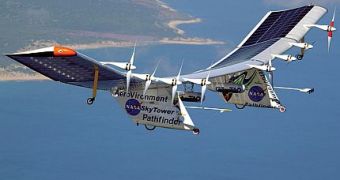We are consuming the fossil fuels at a rate that will deplete them by the end of this century. For a long time, it has been thought that atomic energy would be a solution, but the Cernobyl event warned about the immense risks coming with this source of energy. Solar energy would be a more secure and no-cost alternative.
The Sun, like any star, produces energy through atomic fusion. Atmosphere reflects about 30 % of the sun radiation and absorbs 20 % of it. The remaining 50 % reaches the Earth. Even so, this amount is 170 million times larger than the energy produced by the world's biggest power plants.
In tropical areas, the sun radiation can cause the burning of the scrub lands, the fire being triggered by water droplets that focus the sun rays, acting like optic lenses. 2,400 years ago, the Greeks used sun energy for setting the fire, using glass globes filled with water. 2,200 years ago, the Chinese employed concave mirrors for this purpose.
In the modern solar oven, sun light is used for cooking, using a concave mirror that focus the sunlight on the food or pot. Other types of ovens use a system of flat mirrors for directing the sun rays to the food.
The functioning of the solar furnace is based on the same idea. The French built in Mont Luis a multi-level construction, with a side covered by mirrors, so that, overall, they form a huge concave mirror. The heating chamber from the hotbed can warm up to 3,000o C, a temperature that melts most metals.
To a certain degree, any house is warmed up by sunlight, but some are projected to use this free source of energy. They have large windows on the side exposed to the sunlight at midday and small ones on the shadowed side. The large windows can be mounted in angles that increase the amount of captured sun energy. Shutters and blinds made of thermally insulator material, that close during the night, help keeping inside the heat absorbed during the daytime. This is a passive use of the solar energy.
Many households use solar energy for heating the water. The sunlight warms up cold water passing through closed flat panels, called collectors. They function like reverse radiators, absorbing heat for warming up the water. Usually, they are mounted on the roof of the houses, under an angle that allows them as much as possible of the solar energy.
Solar batteries are electronic devices that use the photoelectric phenomenon for producing power. A sole photocell generate a weak tension, that's why more cells must be bound in a series, so that the solar battery can be used as a source of energy. Photocells appear as thin plates made of semiconductor metals, usually silicon, but also germanium, gallium or arsenic. The battery has a wrapping glass layer, and an aluminum reflecting layer beneath. A germanium-silicon battery can deliver a current of 2 amperes, with a tension of 17 volts and maximum power of 34 W.
The gallium and arsenic cells have low efficiency, but they work at high temperatures, that's why they are used for powering satellites, more exposed to sun radiation. Most satellites function using solar panels, like quartz clocks do, since the '60s.
The Solar Aircraft Challenger flew over the English Channel having the sunlight as unique source of energy. Solar panels covered its wings, generating enough power to rotate the propeller at a proper revolution. Cars using solar batteries can reach speeds of 67 km (41 mi) per hour.
In remote places, most of the power needs of a household could be delivered by solar panels. Part of the generated electric current can be used for loading batteries, so the power is not interrupted at the sunset.
Solar batteries are very secure. Once mounted, they almost do not require continuous revision. They can function for years without supervision. In UK, solar panels deliver power to no-personnel lighthouses and samplers monitoring the weather on the sea and on the shore.
As photocells function on light, not on heat, they can deliver 360 KW power to the lighthouse of a tarmac in the middle of a frozen desert in Alaska.

 14 DAY TRIAL //
14 DAY TRIAL //